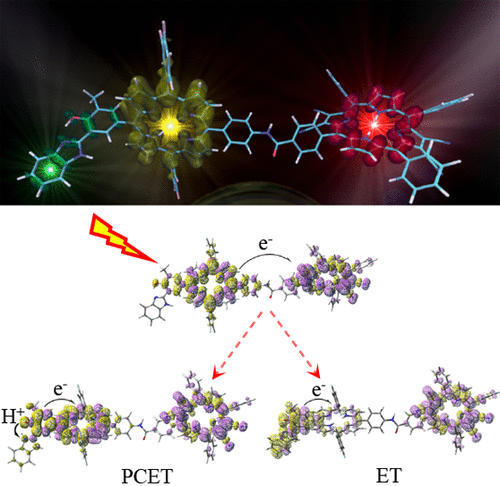H2 Dissociation and Water Evolution on Silver-Decorated CeO2(111): a Hybrid Density Functional Theor
DOI: 10.1021/acs.jpcc.9b06805
The Journal of Physical Chemistry C 2019
We present a theoretical investigation of the reactivity of both a pristine CeO2 surface and a small Ag cluster adsorbed on a CeO2 surface towards H2, using a periodic spin-polarized hybrid density functional theory approach. The dissociation of H2 and subsequent formation of H2O have been considered in order to highlight the role of the metal structure and its underlying metal oxide support as a potential candidate as a catalyst to the above-mentioned reactions. Structural, energetic, electronic and vibrational properties of all species involved in the different reaction paths considered have been fully characterized. The cluster-oxide surface interface has been found to involve the reduction of up to 3 Ce4+ to Ce3+, by direct electron transfer from the cluster to the oxide. When comparing the reducibility of the Ag-CeO2 and clean CeO2 systems, O vacancy formation has been found to be hindered along the perimeter of the cluster, while it is promoted underneath the cluster and almost unaffected on the surface sites close to the cluster. On the other hand, barriers for the H2 dissociation and for the formation of water by H and HO association are lowered with respect to the most favoured reaction path found on clean CeO2. These results highlight the key role of metal structures and their underlying oxide support, and especially the three-phase boundary between the gas phase, Ag and CeO2 as catalysts to such reactions, suggesting potential application as anodic electrocatalyst in fuel cells for example.




